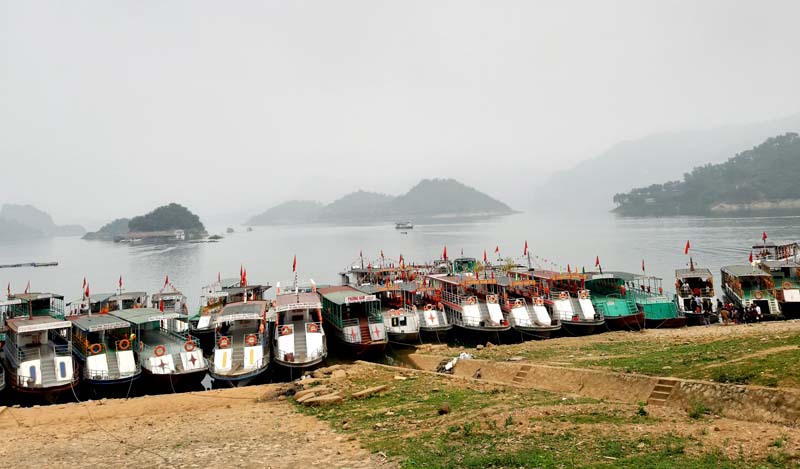


 According to the planning of
tourist ports and wharves of Hoa Binh lake, Thung Nai wharf in Cao Phong
district will be arranged and re-invested.
According to the planning of
tourist ports and wharves of Hoa Binh lake, Thung Nai wharf in Cao Phong
district will be arranged and re-invested.
Functional departments are advising the provincial People's Committee to implement specific solutions to invest in the system of ports and wharves in Hoa Binh lake area.
Deputy Director of Transportation Department Le Ngoc Quan said: On May 31, 2017, the Provincial People's Committee issued a Decision approving the development of domestic ports in the province to 2020, orientation to 2030. Accordingly, some of existing ports will be invested. There will be 3 ports at the downstream of Hoa Binh hydropower station. Port is located on the right bank of Da river which is a cargo handling port. On the left bank of Da river, the area of the old cement factory has a specialized port. The third port in Thinh Lang ward is a general port. The plan also oriented investment in important ports and wharves in Hoa Binh lake area. Thung Nai port which is planned to expand into a port serving mainly for tourists.
The province is developing a plan to balance resources, prioritize investment from infrastructure under planning such as: transport systems, ports, marinas, parking lots to serve tourists. The province encourages investors to built tourist sites at Hoa Binh lake area.
The road renovation and upgrading project of Road 435 which is expectedly completed by 2020. There will be a port in Ngoi Hoa Bay with grade II standards at the end of the route.
Currently, the core zone of Hoa Binh Lake National tourist area (about 1,200 ha) has many investment projects that exploit tourism potential. Implementing the development plan of ports and wharves, some investors are interested in investing in port and wharf systems. There is an idea of investing in wharf in Cho Bo area, Vay Nua commune, Da Bac district. For Thung Nai port, the authorities are planning into a welcoming visitors port to call for investment. For Ba Cap port in Hoa Binh city, there is a plan to build a port to welcome guests...